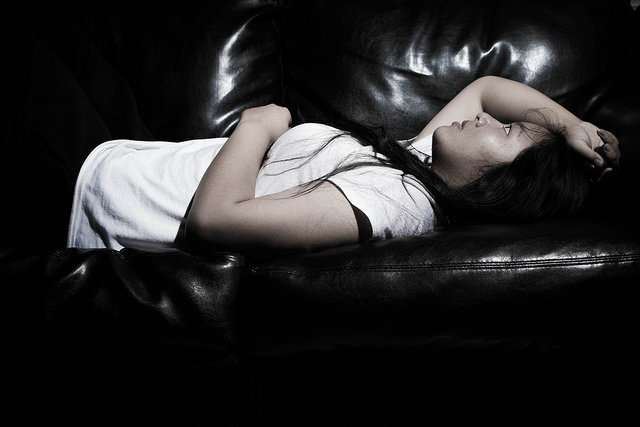Many different types of anxiety and depression exist, new study finds

Five new categories of mental illness that cut across the current more broad diagnoses of anxiety and depression have been identified by researchers in a Stanford-led study.
The five categories, defined by their specific symptoms and areas of brain activation, are: tension, anxious arousal, general anxiety, anhedonia—the inability to feel pleasure—and melancholia.
"We are trying to disentangle the symptom overlap in our current diagnoses which can ultimately guide tailored treatment choices," the researchers wrote in their study, which was published in JAMA Psychiatry.
The research is part of an ongoing effort by Leanne Williams, PhD, professor of psychiatry and behavioral sciences and senior author of the study, and her lab, along with other groups within the field of psychiatric neuroscience, to better define mental illness in order to provide improved treatment plans for the millions of Americans who suffer from these disorders.
Currently, depression and anxiety are the leading cause of disability and lost productivity worldwide with only one-third of patients recovering from treatment, the study said.
The broad diagnostic categories as defined by the Diagnostic and Statistical Manual of Mental Disorders, such as anxiety and depression, have so many overlapping symptoms that it's difficult to identify biological markers for potential treatments or cures, the researchers explained.
"Currently, the treatments would be the same for anyone in these broad categories," Williams said. "By refining the diagnosis, better treatment options could be prescribed, specifically for that type of anxiety or depression."
For their work, the researchers collected and processed data from 420 participants both with healthy diagnoses and with multiple anxiety and depression diagnoses. The participants underwent a series of tests involving brain mapping, self reporting of symptoms, and psychiatric diagnostic testing. Researchers measured how well participants functioned in everyday life, their capacity for building social relationships and general outlook on life.
The same tests were conducted with a second independent sample of 381 people. Using a data-driven approach that involved machine learning algorithms, researchers processed the data and were able to identify the same five new categories across both groups.
Results showed that 13 percent of participants were characterized by anxious arousal, 9 percent by general anxiety, 7 percent by anhedonia, 9 percent by melancholia and 19 percent by tension.
"Interestingly, we found that many people who did not meet diagnostic criteria, but were still experiencing some symptoms, fell into the tension type," said Katherine Grisanzio, lead author of the study and research lab manager in Williams' lab.
In the paper, the researchers further described the new categories:
- Tension: This type is defined by irritability. People are overly sensitive, touchy, and overwhelmed. The anxiety makes the nervous system hypersensitive.
- Anxious arousal: Cognitive functioning, such as the ability to concentrate and control thoughts, is impaired. Physical symptoms include a racing heart, sweating, and feeling stressed. "People say things like 'I feel like I'm losing my mind," Williams said. "They can't remember from one moment to the next."
- Melancholia: People experience problems with social functioning. Restricted social interactions further cause distress.
- Anhedonia: The primary symptom is an inability to feel pleasure. This type of depression often goes unrecognized. People are often able to function reasonably well while in a high state of distress. "We see it in how the brain functions in overdrive," Williams said. "People are able to power through but at some time become quite numb. These are some of the most distressed people."
- General anxiety: A generalized type of anxiety with the primary features involving worry and anxious arousal—a more physical type of stress.
More information: Katherine A. Grisanzio et al. Transdiagnostic Symptom Clusters and Associations With Brain, Behavior, and Daily Function in Mood, Anxiety, and Trauma Disorders, JAMA Psychiatry (2017). DOI: 10.1001/jamapsychiatry.2017.3951




















